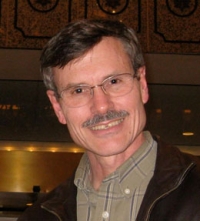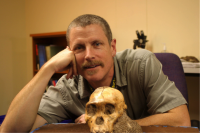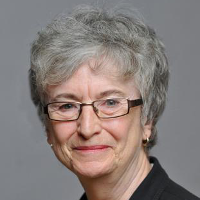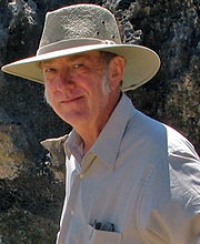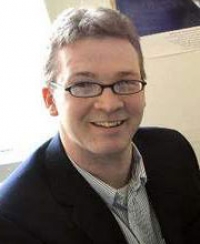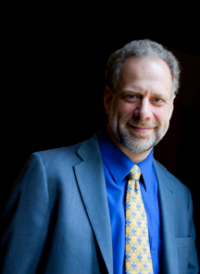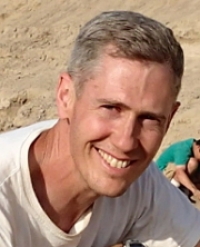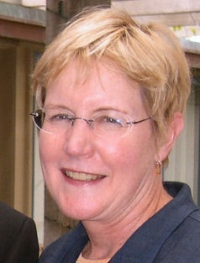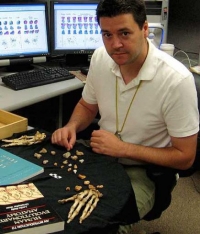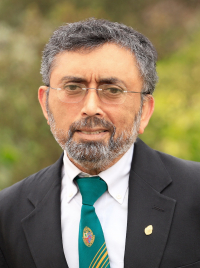The Upright Ape: Bipedalism and Human Origins
Biographical Sketches: Co-Chairs
Johns Hopkins University
Christopher Ruff is a professor and director of the Center for Functional Anatomy and Evolution at the Johns Hopkins University School of Medicine. His work combines biomechanical modeling of the skeletal system with comparative and evolutionary studies of primates, focussing in particular on hominins. He is especially interested in the evolution of hominin bipedality and subsequent changes in postcranial robustness that reflect cultural-biological interactions, including the relationships between relative brain size, technological sophistication, activity patterns, and physical capabilities. Other major interests include the effects of climate on human body size and shape in both living populations and fossil hominins, and the influence of mechanical factors on skeletal growth and development. His work has also been applied in modern clinical settings, including prediction of fractures from indices of skeletal strength and loss of bone mass with aging (osteoporosis). He is a Fellow of the AAAS (Anthropology Section), and has served as the past Editor of the Yearbook of Physical Anthropology, on the editorial boards of the American Journal of Physical Anthropology, Journal of Human Evolution, and Journal of the Anthropological Society of Nippon, and on advisory committees for the AAAS, NSF, AAPA, and L.S.B. Leakey Foundation.
Duke University
Steven Churchill is a Professor and past Chair of the Department of Evolutionary Anthropology at Duke University. He is also an Honorary Reader in the Evolutionary Studies Institute and Centre for Excellence in PalaeoSciences at the University of the Witwatersrand. Dr. Churchill received a B.S. from Virginia Tech and an M.A. and Ph.D. from the University of New Mexico before joining the faculty at Duke in 1995. He is a paleontologist who studies the fossil record of human evolution, especially that of early members of our genus (Homo) that lived between about two million to ten thousand years ago.
Biographical Sketches: Speakers
University College London
Leslie Aiello is Professor Emerita, University College London and President Emerita of the Wenner-Gren Foundation for Anthropological Research. Her academic interests focus on the evolution of human adaptation as well as on the broader issues of evolutionary theory, life history, energetics, and the evolution of the brain and cognition. She has degrees from the University of California Los Angeles and from the University of London. She spent the majority of her academic career at University College London (1976-2005) and returned to the US to head the Wenner-Gren Foundation for Anthropological Research (2005-2017). She was president of The American Association of Biological Anthropologists (AABA) from 2018-2019 and currently serves on the Board of the Smithsonian’s National Museum of Natural History. Throughout her career she has been active with the media in the public dissemination of science and has served as consultant and advisor to a variety of international anthropological institutions and initiatives.
Boston University
Matt Cartmill joined Boston University’s Anthropology Department as a professor and director of graduate studies in 2008. He has published more than a hundred scholarly and popular works on the evolution of people and other animals and on the history and philosophy of evolutionary biology. Well known for his revolutionary analyses of the origins and early evolution of the ancestral primates, he has also made innovative contributions to scientific thinking about the origins and relationships of higher primates, prosimian anatomy, early hominin adaptations, quadrupedal locomotion, cranial evolution, and the philosophy of science. Dr. Cartmill’s award-winning 1993 book, A View to a Death in the Morning, is a witty and thoughtful dissection of the cultural assumptions behind the hunting hypothesis in human evolution. He is the co-author (with F. H. Smith) and illustrator of The Human Lineage, a comprehensive new (2009) survey of human evolution. The recipient of numerous awards for his research, writing, and teaching, Dr. Cartmill is a Guggenheim and AAAS Fellow, a former president of the American Association of Physical Anthropologists, a founding co-editor of the International Journal of Primatology, and the former editor-in-chief of the American Journal of Physical Anthropology.
Dartmouth College
Jeremy DeSilva is an assistant professor in the Department of Anthropology at Boston University. He is a functional morphologist, interested in reconstructing the locomotor habits of the earliest apes and early human ancestors (hominins). His particular anatomical expertise is the evolution of the human foot and ankle and has contributed to the on-going debate of Australopithecine locomotion. Most recently, he has helped describe the foot and ankle bones of the new species, Australopithecus sediba. He has also developed a method for inferring the size of the brain at birth in extinct humans and other primates, thus allowing more reliable inferences concerning labor and its constraints on the anatomy and evolution of the pelvis. Dr. DeSilva has studied climbing in a wild population of chimpanzees in the Kibale National Park, western Uganda.
Harvard University
Daniel Lieberman is the Edwin M. Lerner II Professor of Biological Sciences in the Department of Human Evolutionary Biology at Harvard University. He received degrees from Harvard and Cambridge University, and taught at Rutgers University and George Washington University before joining the Harvard Faculty in 2001. Lieberman’s research, which focuses on the evolution of human physical activity, combines experimental biomechanics, anatomy, and physiology both in the lab and in the field, and he has conducted research in Africa for almost 30 years, and now also works in Mexico. He loves teaching and has published over 150 papers, many in journals such as Nature, Science, and PNAS. He is best known for his research on the evolution of the head and on the evolution of running, which he also enjoys doing himself. He has published two books, The Evolution of the Human Head (2011), and The Story of the Human Body: Evolution, Health and Disease (2013). He forthcoming book is on the evolution of human physical activity.
American Museum of National History
Brian Richmond is Curator of Human Origins at the American Museum of National History in New York City. Prior to that, he was Associate Professor and Chair of the Department of Anthropology at The George Washington University. His research involves paleontological fieldwork and analytical laboratory studies, both of which are critical to our understanding of human evolution. Dr. Richmond's research focuses on functional anatomy and human evolution, especially in the context of questions about the origin and evolution of human gait and the functional anatomy of the hand. Current projects include paleontological fieldwork in Koobi Fora, Kenya, the recovery and analysis of fossil footprints, analyses of early hominin anatomy, developing new approaches to reconstruct locomotor behavior from skeletal anatomy, and investigating craniofacial biomechanics in hominins and other primates. He is a member of the Center for the Advanced Study of Hominid Paleobiology at GW, and Research Associate in the Human Origins Program at the Smithsonian Institution’s National Museum of Natural History.
UC San Diego
Margaret Schoeninger is Distinguished Professor Emerita of Anthropology at UC San Diego, a Research Archaeologist in the Glenn Black Laboratory of Archaeology at Indiana University, and Emerita Co-Director of CARTA. She has done fieldwork in North America, Mexico, Pakistan, India, Kenya, and Tanzania as well as laboratory research on carbon, nitrogen, and oxygen stable isotope ratio analysis in biological tissues and food component analysis of traditional foods. Her major interest is in the evolution of human diet particularly as it informs our understanding of the appearance and evolution of the human lineage.
Lakehead University
Matt Tocheri is Canada Research Chair in Human Origins at Lakehead University (Thunder Bay, Ontario) and a Research Associate in the Human Origins Program at the Smithsonian Institution’s National Museum of Natural History. Dr. Tocheri’s main research interests surround the evolutionary history and functional morphology of the human and great ape family, the Hominidae.
UC San Diego School of Medicine
Ajit Varki is a Distinguished Professor of Medicine and Cellular & Molecular Medicine, Emeritus Co-Director of CARTA, Emeritus Co-Director of the Glycobiology Research and Training Center at UC San Diego, and Adjunct Professor at the Salk Institute. He received basic training in physiology, medicine, biology, and biochemistry at the Christian Medical College (CMC), Vellore, The University of Nebraska, and Washington University in St. Louis. He also has formal training and board certification in internal medicine, hematology, and oncology. Varki is the executive editor of Essentials of Glycobiology (Cold Spring Harbor Press, 4th Edition, 2022) and is recipient of a MERIT award from the NIH, and an American Cancer Society Faculty Research Award. Honorific elections include the American Academy of Arts and Sciences, the National Academy of Medicine, the American Society for Clinical Investigation, and the Association of American Physicians. He is also recipient of the three highest honors in his field, the Karl Meyer Award of the Society for Glycobiology, the International Glycoconjugate Organization Award and the Rosalind Kornfeld Award for Lifetime Achievement in Glycobiology. He is recognized for creating the first major open access research journal (J. Clin. Invest., 1996) as well as the first major open access textbook (Essentials of Glycobiology, 2009). He was honored with the Old Cottonian of Eminence Award at the 150th Anniversary of Bishop Cotton Boys School, Bangalore, India, (2015) as well as a Distinguished Faculty Medal and Oration at his medical school alma mater, CMC, Vellore. Significant past appointments include: Co-Head, UC San Diego Division of Hematology-Oncology; President of the Society for Glycobiology; Editor-in-Chief of the Journal of Clinical Investigation; Interim Director of the UC San Diego Cancer Center, President of the American Society for Clinical Investigation, and UC San Diego Associate Dean for Physician-Scientist Training. Varki's research interests are focused on a family of cell surface sugars called sialic acids, and their roles in biology, evolution and disease. Currently, active projects are relevant to the roles of sialic acids in microbial infectivity, the regulation of the immune response, the progression and spread of tumors, aging, and unique aspects of human evolution. His group is particularly intrigued to find multiple interrelated differences in sialic acid biology between humans and our closest evolutionary cousins, the "great apes." These differences are a signature of the events that occurred during the last few million years of human evolution, and appear to be relevant to understanding several aspects of the current human condition, both in health and disease. Varki’s book, Denial (Twelve, Hachette Books, 2013), explores a novel "Mind Over Reality Transition” (MORT) theory that denying reality and personal mortality was a key step in allowing the emergence of a full theory of mind, and in the origin of our species.
University of Missouri-Columbia
Carol Ward earned her B.S. in Anthropology and Zoology from the University of Michigan in 1986 and her Ph.D. in Functional Anatomy and Evolution from the Department of Cell Biology and Anatomy at the Johns Hopkins School of Medicine in 1991. She joined the faculty at the University of Missouri in 1991 in a joint appointment in the Departments of Anthropology and Anatomy. In 2006, she moved full time to the Department of Pathology and Anatomical Sciences where she is a Professor and Director of Anatomical Sciences in that department’s Integrative Anatomy group. Ward has studied the evolution of Miocene hominoids as well as Pliocene and Pleistocene hominins. She has done paleontological fieldwork in Kenya and Hungary. She is co-director of the West Turkana Paleo Project through the National Museums of Kenya, with whom she has worked at the Australopithecus anamensis site of Kanapoi and will begin fieldwork at Lomekwi in 2016. Her work has been funded by the National Science Foundation, Leakey Foundation, Wenner-Gren Foundation, and the University of Missouri. She is a Fellow of the American Association for the Advancement of Science, holds affiliations with the National Museums of Kenya, Institute of Human Origins, Cleveland Museum of Natural History, and the Evolutionary Studies Institute in South Africa, is a member of the African Rift Valley Research Consortium, and has won several teaching awards.
